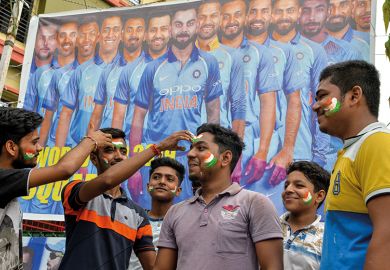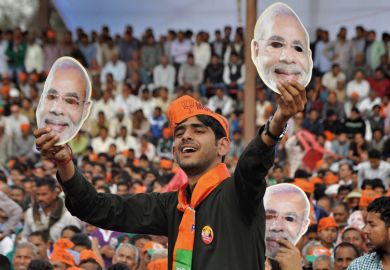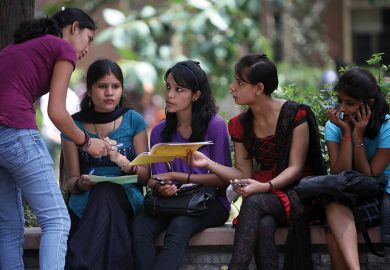Australia must take advantage of a “first principles” overhaul of Indian higher education to deepen educational ties with the subcontinent, according to a Melbourne geographer.
Craig Jeffrey said that an “ecosystem of research collaboration” was a prerequisite for educational engagement with India, including student recruitment. He said that the draft National Education Policy (NEP), a “frank and ambitious rethink” unveiled in June, offered a springboard to new opportunities.
Those opportunities could come under scrutiny this week, with Australian education minister Dan Tehan leading a delegation of Australian university leaders to New Delhi, ahead of a planned visit by Prime Minister Scott Morrison in January.
Professor Jeffrey said that India’s “big policy push” needed to be recognised in conversations with the country’s bureaucrats and government. “The UK and Singapore already are getting in on the act. Australia needs to be in on the ground floor,” he said.
Reforms outlined in the NEP include creating a new National Research Fund, revamping regulatory arrangements and completely rebuilding the current system of about 800 universities. Within two decades, there would be up to 300 research universities, 2,000 teaching universities and 10,000 colleges. Universities in the top two tiers would conduct research, and third-tier institutions could “begin to conduct quality research…over time”.
Professor Jeffrey said that such aspirations required an international effort to cultivate India’s stock of teachers and online learning capabilities, offer feedback on regulation and social equity reforms and – most importantly – help India develop research capacity in its universities.
He acknowledged that many current Indian students were “going to universities that don’t place a premium on research”. But that needed to change, for both countries’ sakes. “[If] we are talking about [Australian] recruitment of students from India, we need to be linking it to the conversation about research collaboration,” he said.
“If you’re serious about building a serious stream of Indian students, the experience of those students needs to be research-driven, where they are put in front of lecturers and tutors who are at the top of their fields. That’s got to be the crucial offering. Otherwise you won’t be able to sustain the flow for any length of time. You may be able to game it for the first few years, then it’s going to fall over.”
Lawrence Pratchett, pro vice-chancellor for students, partnerships and international at the University of Canberra, said that the NEP could pave the way for foreign institutions’ branch campuses in the subcontinent. But he said that Indian media had raised concerns that foreign universities would “come in and strip out the best of the Indian education system and leave the rest behind”.
Educational outreach in India must be a “true partnership that’s beneficial to both partners”, Professor Pratchett stressed.
A newly launched bsp;centre at Chandigarh University, in Canberra vice-chancellor Deep Saini’s home state of Punjab, will host local students who undertake Chandigarh courses embedded with the Canberra syllabus before they complete their degrees in Australia. Professor Pratchett said that the initiative was “more than just a twinning arrangement”.
He said that it would involve joint projects where students in both countries worked on industry-based problems. The centre would also host Australian students and, eventually, research.
Professor Pratchett said that it would be “disingenuous” to suggest that Canberra was not interested in cultivating student flows from India. “Universities are economic beasts, after all. But we see this as a long-term investment. We’re keen to be giving something to Punjab and India.”
Register to continue
Why register?
- Registration is free and only takes a moment
- Once registered, you can read 3 articles a month
- Sign up for our newsletter
Subscribe
Or subscribe for unlimited access to:
- Unlimited access to news, views, insights & reviews
- Digital editions
- Digital access to THE’s university and college rankings analysis
Already registered or a current subscriber?









